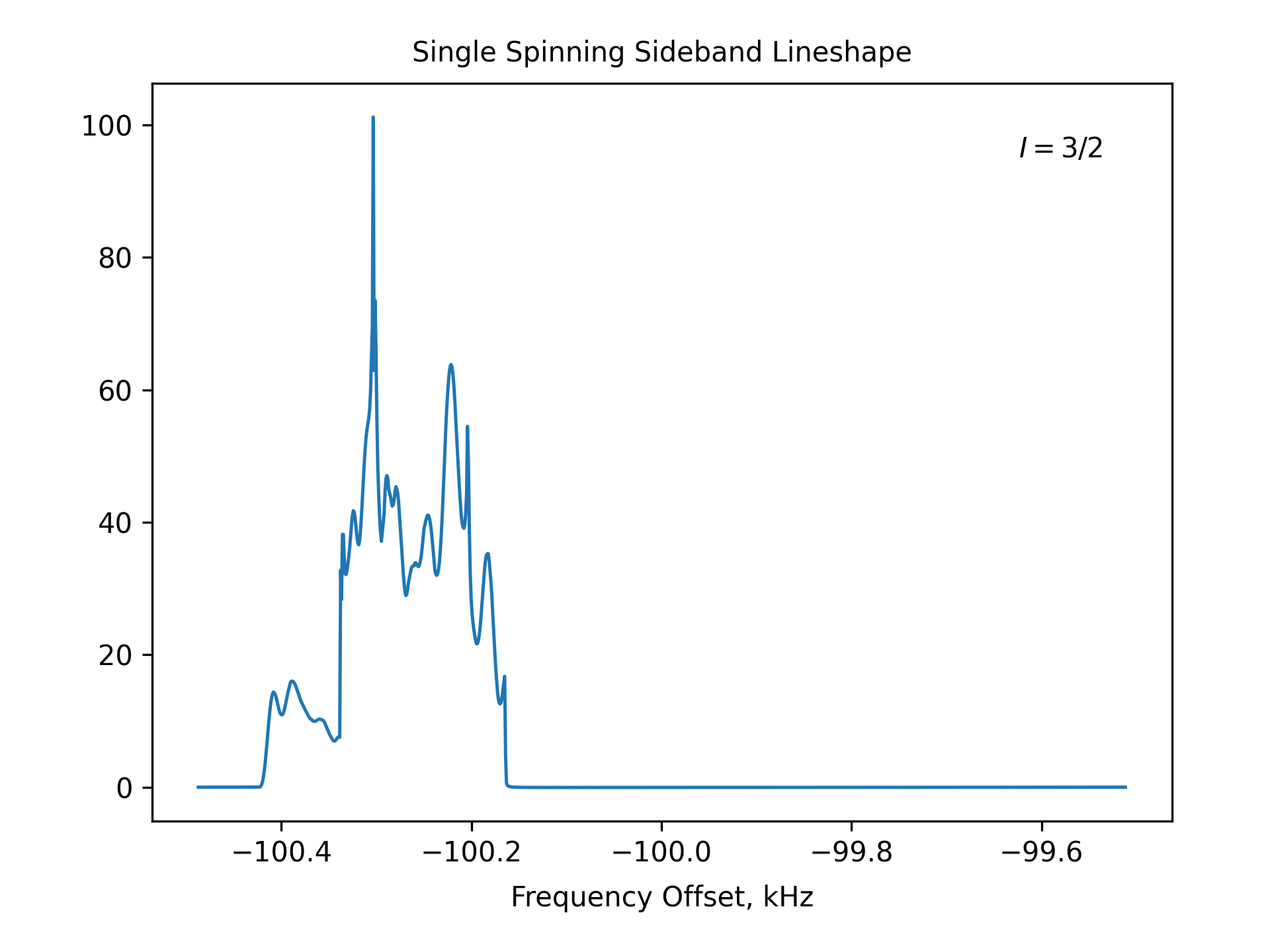Quadrupolar Sideband Lineshape

quad_sb
****** The System ************************** spectrometer(MHz) 500 spinning_freq(kHz) 10 channels X(200 3/2) nuclei X atomic_coords * cs_isotropic 100 csa_parameters * j_coupling * quadrupole 1 1000 0.25 0 0 0 dip_switchboard * csa_switchboard * exchange_nuclei * bond_len_nuclei * bond_ang_nuclei * tors_ang_nuclei * groups_nuclei * ******* Pulse Sequence ********************* CHN 1 timing(usec) (0.5)2m power(kHz) 0 phase(deg) 0 freq_offs(kHz) 0 ****** Variables *************************** dim_1_labels = dim_1_labels - cs_iso_1 fig_title="Single Spinning Sideband Lineshape" fig_options="--text 0.85,0.9,$I=3/2$" ******* Options **************************** rho0 I1x observables I1p EulerAngles asgind100o n_gamma 200 line_broaden(Hz) * zerofill * FFT_dimensions 1 lowpass_npoints 1024 options -re -py ******************************************** -- A single sideband can be obtained by shifting the spectrum to place the sideband at zero frequency and then turning on the lowpass feature. In this example, the "full" spectrum with 2M points is cut down to the 1024 points. The resulting spectum is computed at the same resolution (SW/npoints) as the full spectrum would have been computed. A different resolution can be set by the variable lowpass_sw, in which case the number 2M would be essentially ignored. -- One can verify that the output in this example coincides with the 10th sideband in the spectrum obtained in the quad_full example (except for a much higher resolution). -- Note that the spectral width specified by the pulse sequence should be sufficient to cover the full spectrum to prevent folding.
